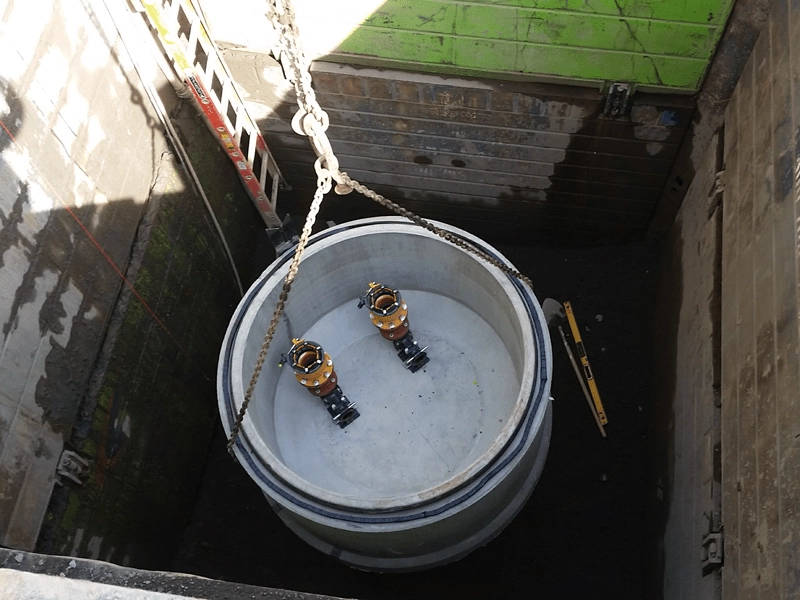Monolithic Precast Wet Well Bases Beyond 8 Feet
Monolithic Precast Wet Well Bases are the unsung heroes of wastewater infrastructure, providing the essential foundation for the proper management of sewage and wastewater. These structures often need to handle significant volumes, and their design and construction become increasingly complex when the internal diameter exceeds 8 feet.
The term “monolithic” may suggest that the entire structure is poured in one continuous operation, but this isn’t always the case. Typically, monolithic precast wet well bases consist of two key components: the uplift collar and the riser. Precasters, however, usually lack molds larger than 8 feet in diameter for a single pour monolithic base. Consequently, for structures exceeding this size, the base and riser are manufactured separately and later connected, either using a tongue-and-groove method or a flat face connection.
The tongue and groove method is a common approach used in the construction of Precast Wet Well Bases, particularly when joining the base and riser sections. Essentially, the base typically has a protruding tongue, while the riser has a matching groove, creating a type of interlocking system.
This method ensures a secure connection between the components, providing stability and preventing potential issues such as water leakage and structural instability.
A “flat face connection” is another method used in the construction of wet well bases in wastewater infrastructure. This approach involves joining the base and riser sections without the use of a tongue and groove mechanism. Instead, the base and riser have flat surfaces that are connected using appropriate bonding materials such as mortar.
Regardless of the connection method employed, additional support such as mortar is required to ensure the stability and airtight seal of the connection.
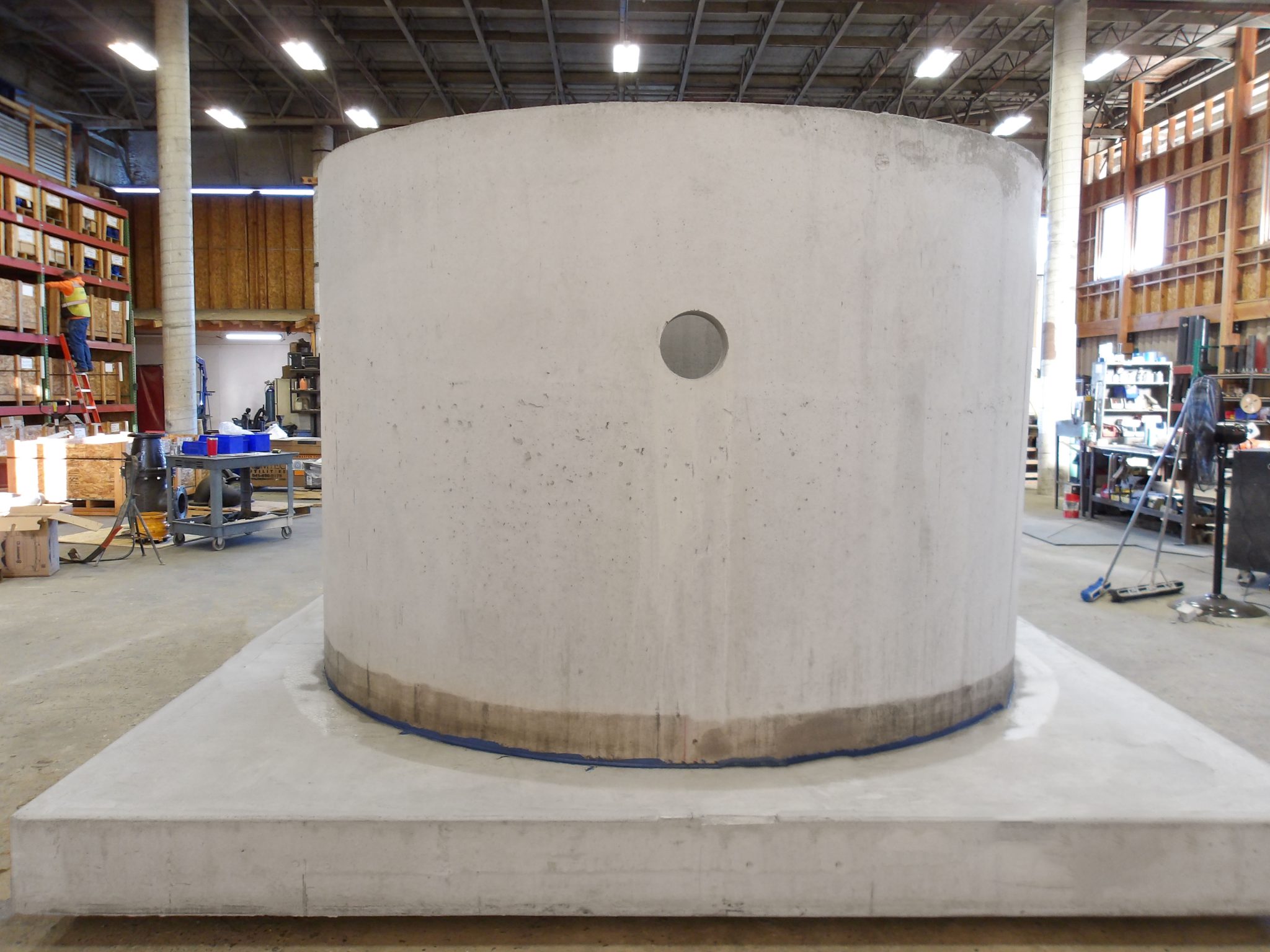
Creating a Watertight Base
Ensuring that Monolithic Precast Wet Well Bases are watertight is crucial to prevent water leakage, contamination, and environmental damage. The use of innovative coatings, such as fiberglass coatings like those demonstrated in Romtec Utilities’ Freeport, Texas project, has revolutionized the field. These coatings can span the entire wet well base, creating a seamless, sealed environment that effectively contains wastewater. This development has not only improved the efficiency and reliability of wet well bases but has also reduced maintenance costs and potential environmental hazards. As part of the Romtec Utilities “Quality Control Process, we test all our wet wells for leaks prior to shipping to the site. This is one of the many advantages of purchasing a precast package pumping system for your project, as well as the advantage of working with Romtec Utilities because we understand the many advantages of a precast sump and the way they allow us to better serve our customers and set their projects up for success.
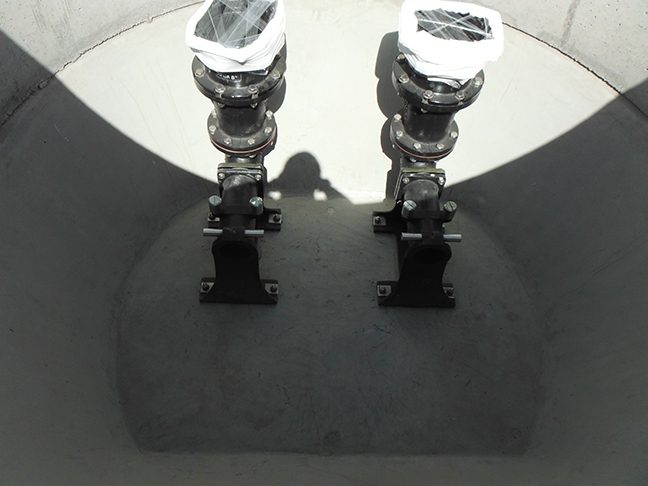
Lifting Challenges
The process of lifting these structures can be a significant challenge. The approach varies depending on whether you’re dealing with a true “single pour” base or a structure that requires the connection of a riser and base slab. In a true “single pour” base, lifting is generally more forgiving because there is no joint to worry about shifting or cracking during the process.
Conversely, when handling a “pseudo-monolithic” base, which involves the connection of various components, there are substantial concerns about the integrity of the interior liner and the stability of the joint. To address these concerns, a specialized “spreader” bar is employed during the lifting process. This ensures that unnecessary pressure isn’t placed on the riser, which could stress the joint and compromise the structural integrity of the base.
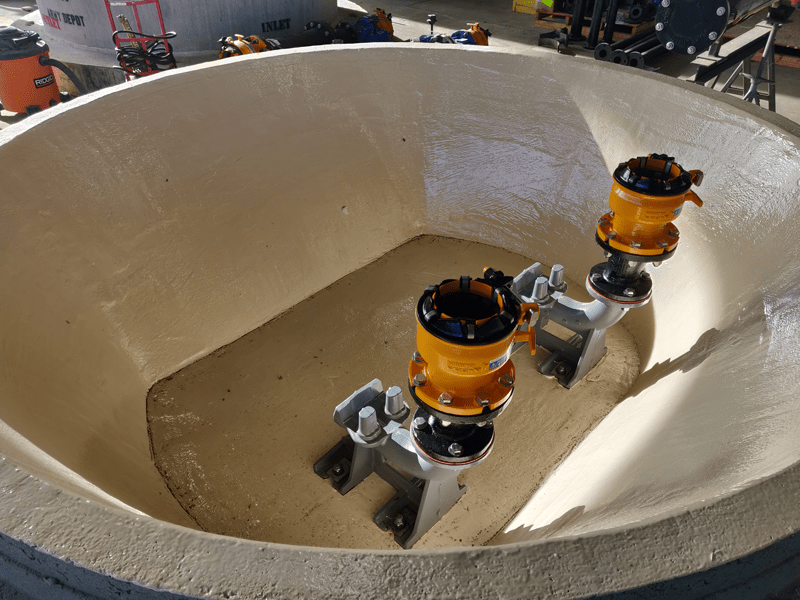
Logistics and Engineering Expertise
The size of the structure also significantly impacts the lifting operation. Larger structures necessitate the use of substantial cranes capable of handling both the weight and dimensions of the wet well components. This underscores the importance of logistics and engineering expertise in these construction projects. That’s why Romtec Utilities’ Project Managers ensure the availability of the right equipment on site and Romtec Utilities’ advisors ensure the lifting process is executed with precision for the safety and success of the entire project.
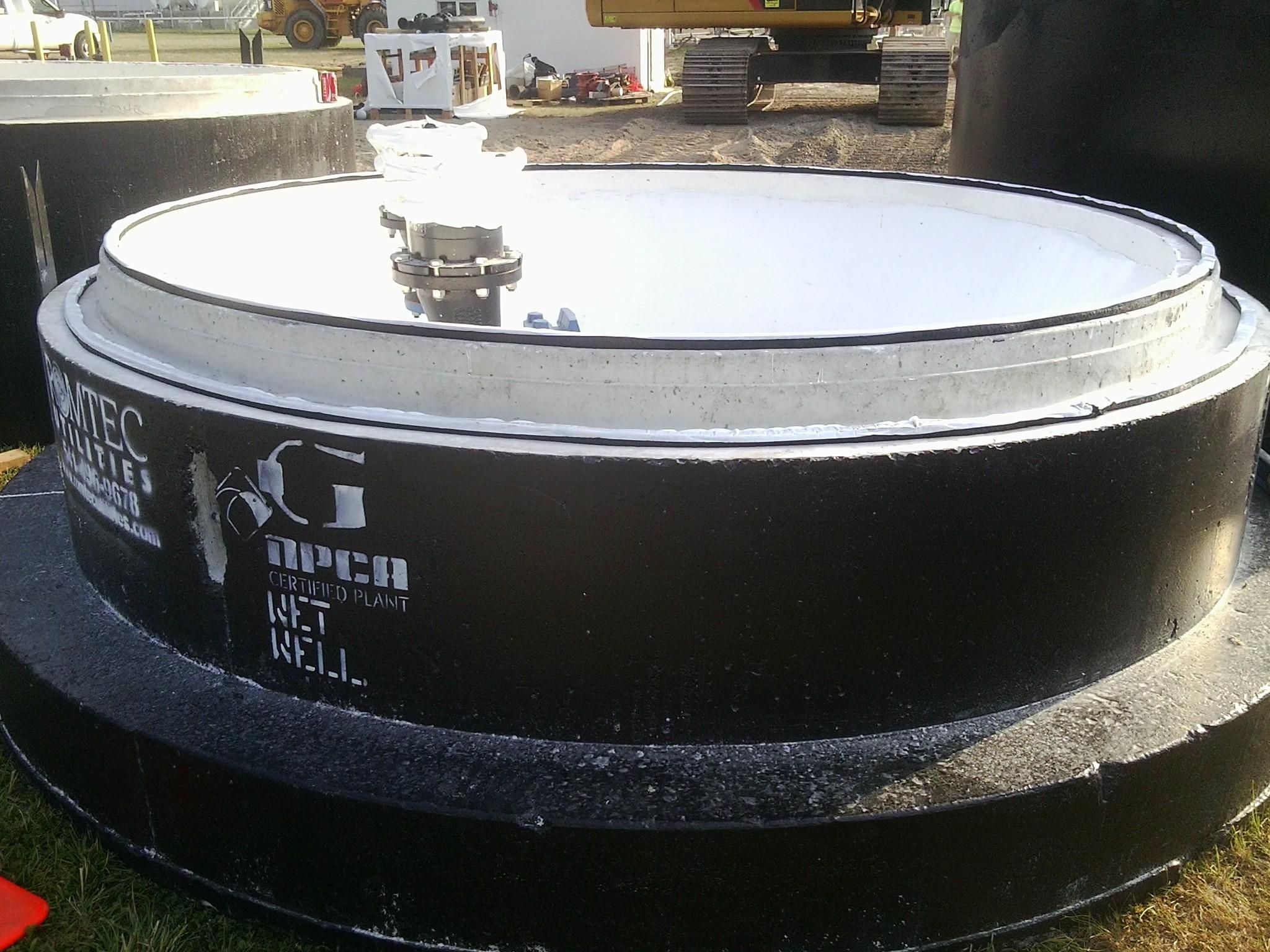
Freeport, Texas
Romtec Utilities was contacted by one of the world’s prominent hydrogen gas suppliers for a design-build industrial process water package pumping system at a new helium gas plant in Freeport, Texas. This system required discretion for pumping classified waste which is why Romtec Utilities was the perfect fit for this project. There is no “one size fits all” at Romtec, we have not developed any package pumping system designs with the intention of fitting that design into various applications. Romtec Utilities starts from the very beginning with each project and designs according to that specific pumping scenario.
Romtec Utilities determined that the Freeport project required an 8’ precast concrete wet well with a “flat face connection” instead of a single pour monolithic base. For the coatings, Romtec Utilities used a custom Tnemec multi-layer for the interior and a Tnemec 41 for the exterior. To lift the connected base, Romtec Utilities used 4 anchor points in the base slab of each corner. As part of our customization abilities, and the way we handle each unique project, the Freeport package pump station required a custom “spreader” bar to lift the wet well base and prevent any stress on the barrel. This is something we were able to include thanks to our own metal and fabrication shop. Finally, a crane was required to lift the complete assembly onto the truck for shipping.
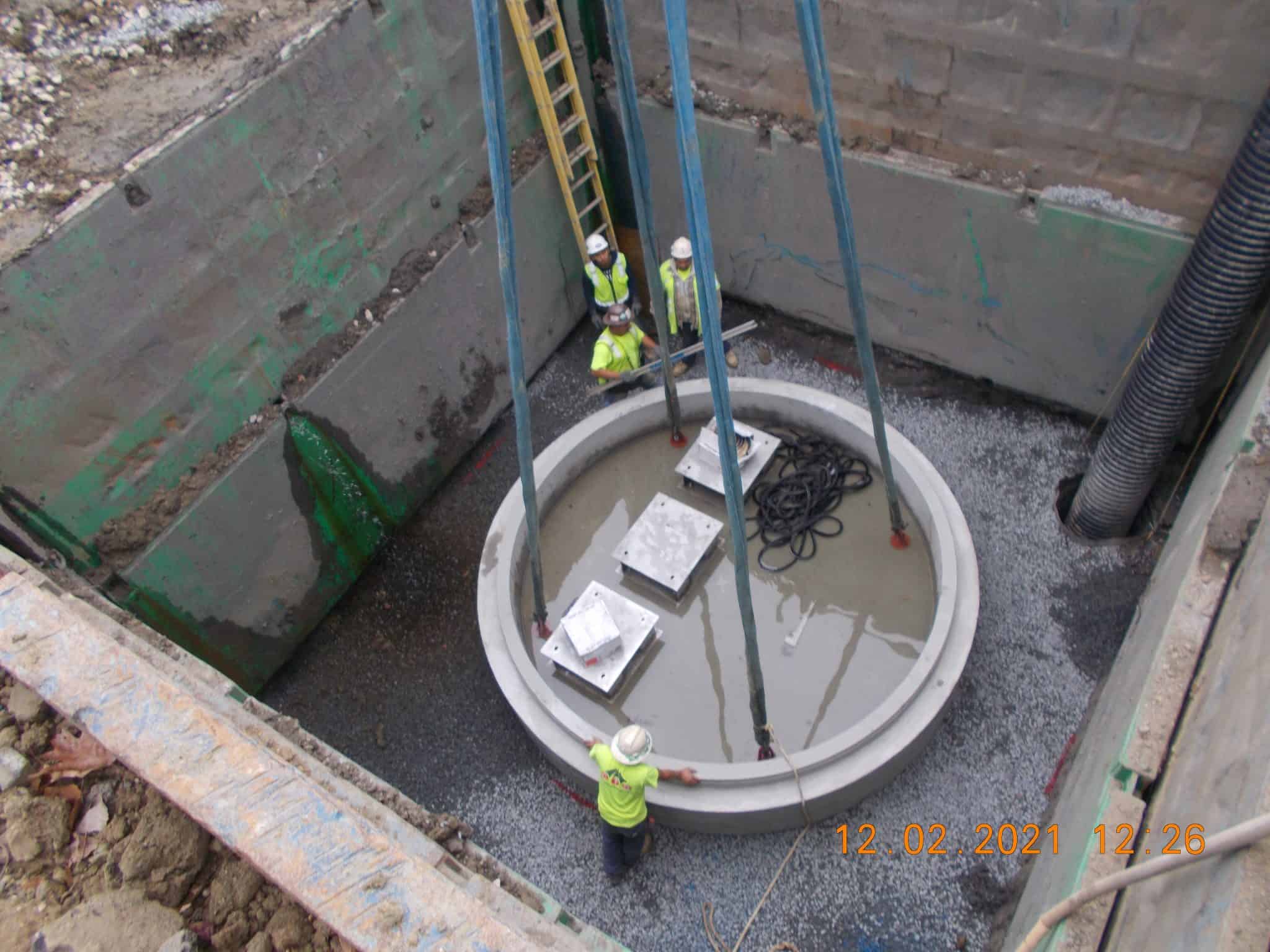
Conclusion
Precast wet well bases are the cornerstone of efficient and reliable wastewater infrastructure, playing a vital role in maintaining clean and healthy communities. Understanding how these structures are constructed, the challenges they pose, and staying updated on innovations such as coatings and lifting techniques are essential to guarantee the continued efficiency and reliability of wastewater systems.
These unassuming structures ensure that when you flush a toilet or use a sink, the waste is efficiently and safely managed, protecting our environment and public health. As we reflect on the marvel of these foundations, it’s clear that even the less visible components of our infrastructure are critical to our well-being. Monolithic Precast Wet Well Bases may not be in the spotlight, but they remain the unsung heroes that underpin the functioning of our wastewater systems.

